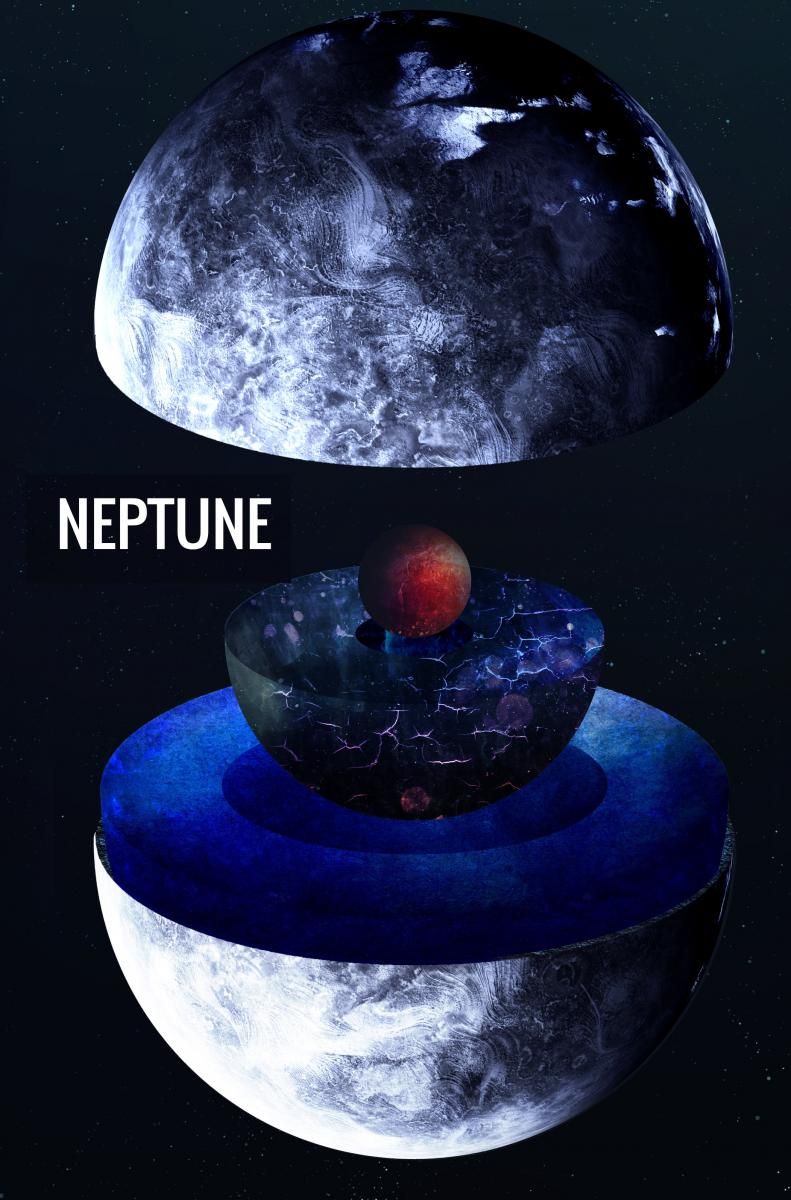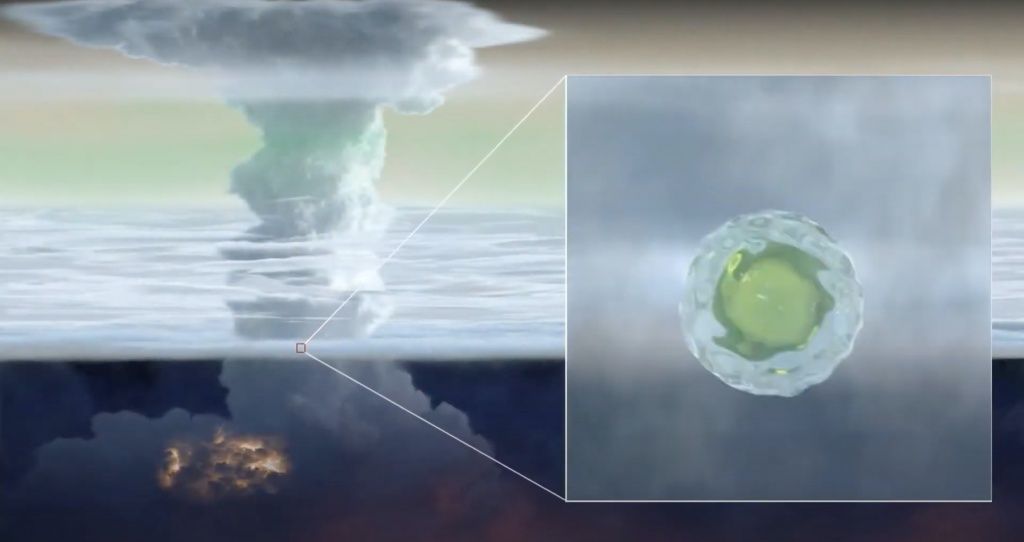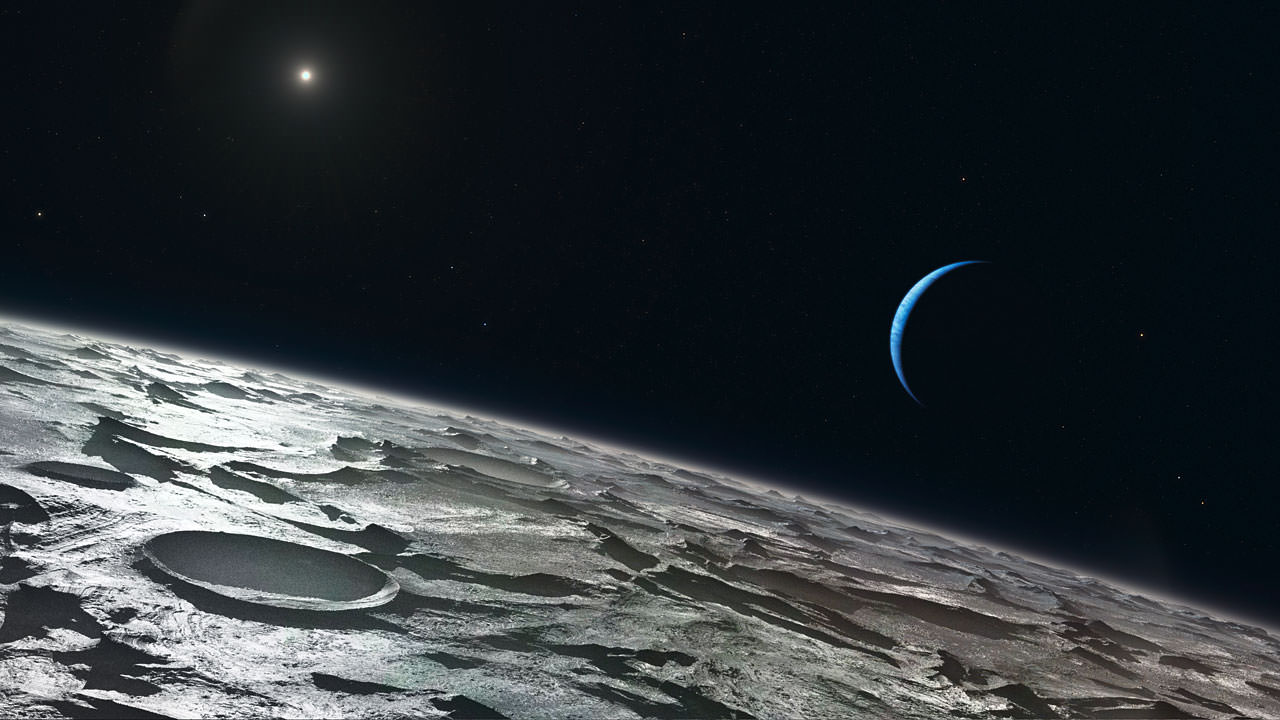Uranus and Neptune are similar planets in many ways. Both are ice giant worlds, both have atmospheres rich in methane, and both have a bluish color. But while Uranus has a pale blue-green hue, Neptune has a deep blue color. But why? Why would two planets so similar in size and composition appear so different? According to a recent study, the answer lies in their aerosols.
Continue reading “Why are Neptune and Uranus Different Colors?”Here are Hubble’s 2021 Photos of the Outer Solar System
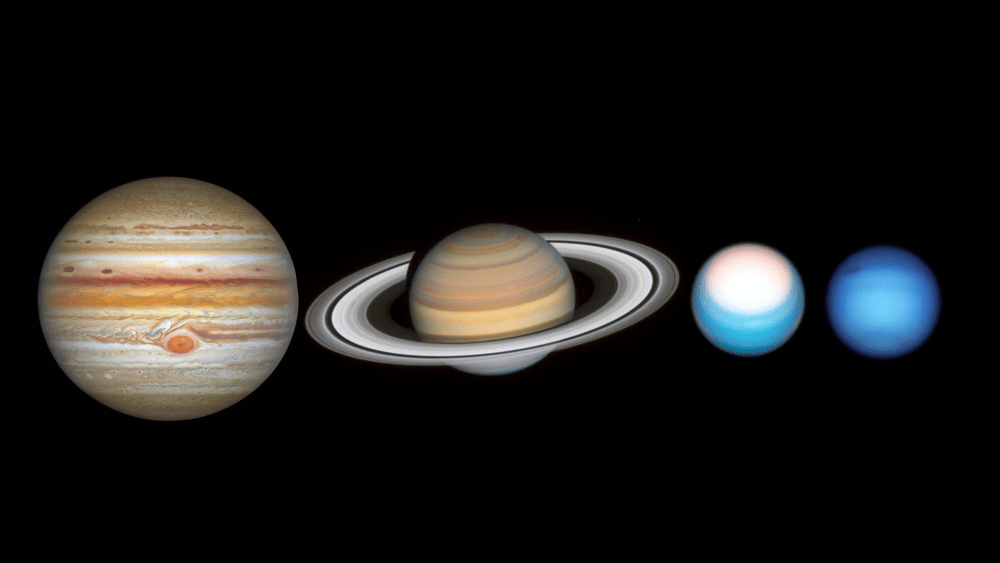
If we had to rely solely on spacecraft to learn about the outer planets, we wouldn’t be making great progress. It takes a massive effort to get a spacecraft to the outer Solar System. But thanks to the Hubble Space Telescope, we can keep tabs on the gas giants without leaving Earth’s orbit.
Continue reading “Here are Hubble’s 2021 Photos of the Outer Solar System”Why do Uranus and Neptune Have Magnetic Fields? Hot ice
The outer “ice giant” planets, Neptune and Uranus, have plenty of mysteries. One of the biggest is where exactly they got their magnetic fields. They are strong at that, with Neptune’s being twenty-seven times more powerful than Earth’s, while Uranus’ varies between ? and four times Earth’s strength. Chaos rules in these electromagnetic environments, making them exceptionally hard to both understand and model. Now a team of researchers led by Dr. Vitali Prakpenka of the University of Chicago thinks they might have found the underlying cause of both the field’s strength and its randomness – “hot ice.”
Continue reading “Why do Uranus and Neptune Have Magnetic Fields? Hot ice”Giant Balls of Mush Made From Ammonia and Water Form in the Atmospheres of Uranus and Neptune
One advantage to planetary science is that insights from one planet could explain phenomena on another. We understand Venus’ greenhouse gas effect from our own experience on the Earth, and Jupiter and Saturn share some characteristics. But Jupiter also provides insight into other, farther out systems, such as Uranus and Neptune. Now, a discovery from a spacecraft orbiting Jupiter might have solved a long-standing mystery about Uranus and Neptune – where has all the ammonia gone?
Continue reading “Giant Balls of Mush Made From Ammonia and Water Form in the Atmospheres of Uranus and Neptune”A 6-Year Search of the Outer Solar System Turns up 461 new Objects (but no Planet 9)
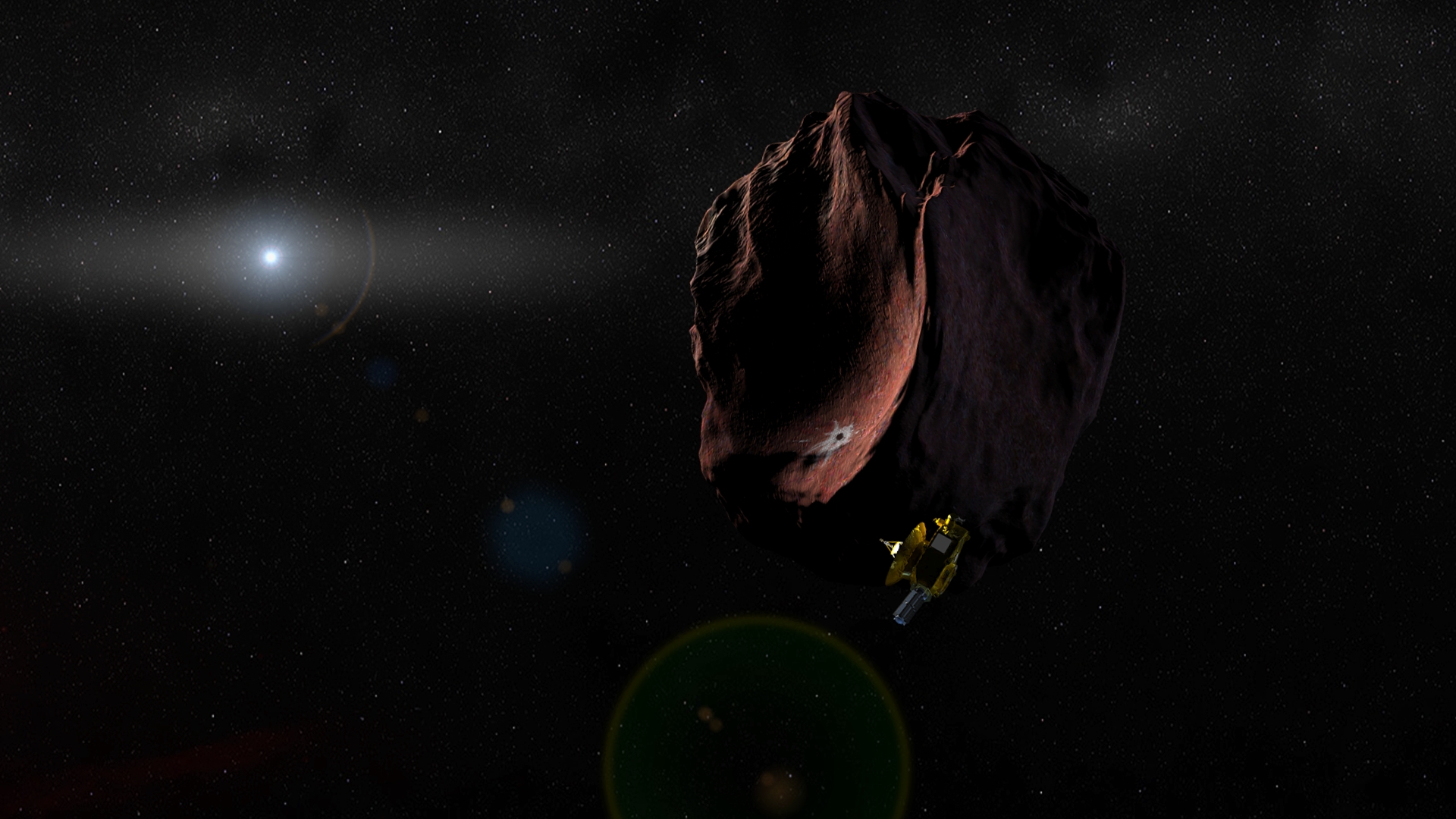
In the near future, astronomers will benefit from the presence of next-generation telescopes like the James Webb Space Telescope (JWST) and the Nancy Grace Roman Space Telescope (RST). At the same time, improved data mining and machine learning techniques will also allow astronomers to get more out of existing instruments. In the process, they hope to finally answer some of the most burning questions about the cosmos.
For instance, the Dark Energy Survey (DES ), an international, collaborative effort to map the cosmos, recently released the results of their six-year survey of the outer Solar System. In addition to gathering data on hundreds of known objects, this survey revealed 461 previously undetected objects. The results of this study could have significant implications for our understanding of the Solar System’s formation and evolution.
Continue reading “A 6-Year Search of the Outer Solar System Turns up 461 new Objects (but no Planet 9)”Both Uranus and Neptune Have Really Bizarre Magnetic Fields
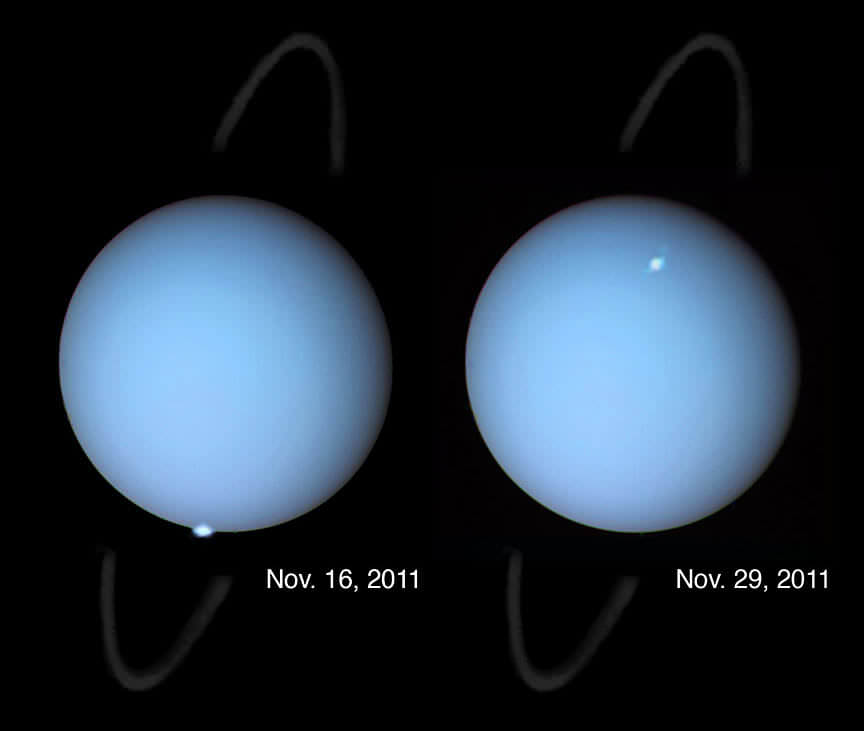
The magnetic fields of Uranus and Neptune are really, seriously messed up. And we don’t know why.
Continue reading “Both Uranus and Neptune Have Really Bizarre Magnetic Fields”Hubble Releases a New Image of Neptune, Revealing a Rapidly Shifting Storm
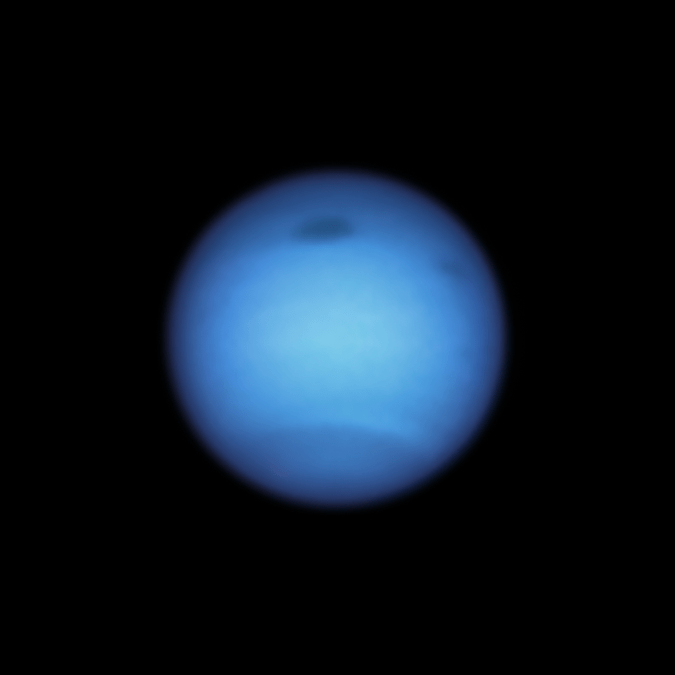
Storms on Neptune seem to follow a pattern of forming, strengthening and then dissipating over the course of about two Earth years. But a Neptunian storm spotted in the planet’s atmosphere over two years ago has done something quite different: it has reversed course and is still going strong.
Continue reading “Hubble Releases a New Image of Neptune, Revealing a Rapidly Shifting Storm”Neptune & Triton – August 31, 1989.
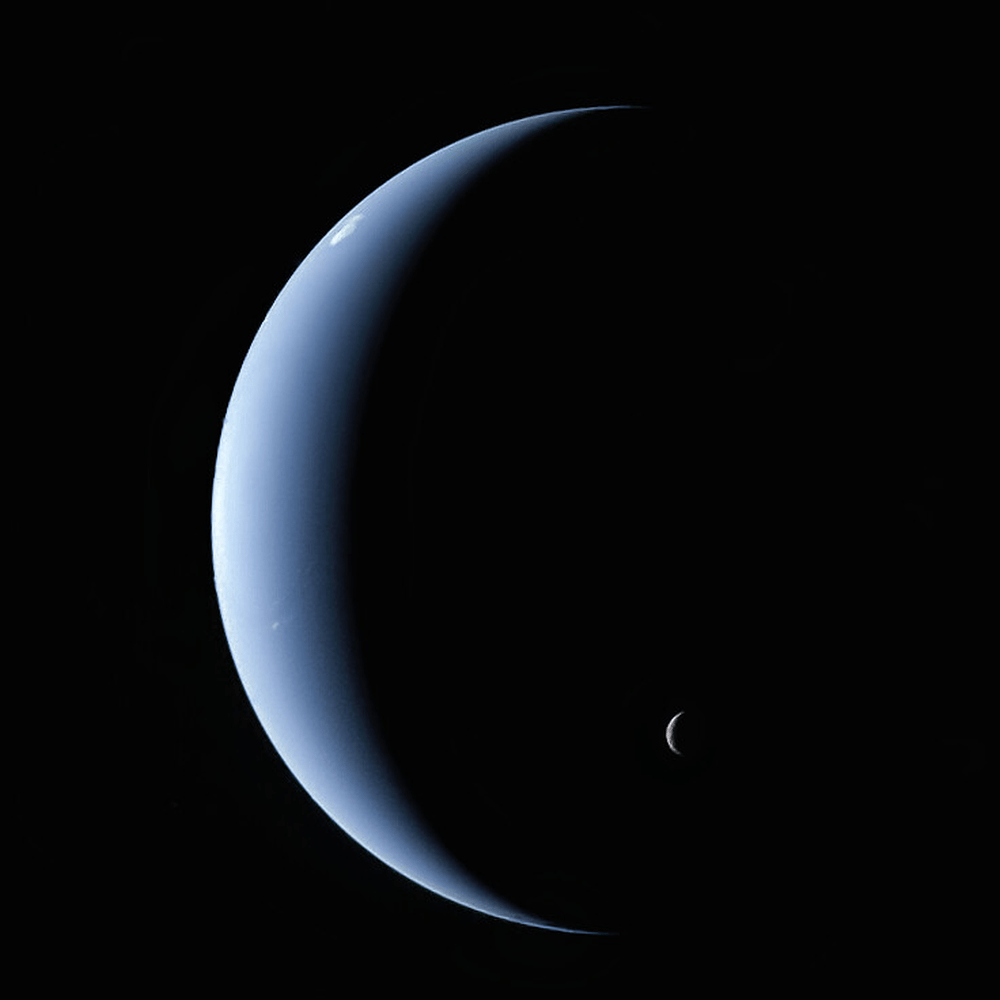
Image-processor extraordinaire Kevin Gill has reached back in time to give us a new image of Neptune and its moon Triton.
When NASA’s Voyager 2 spacecraft flew past Neptune and Triton in August 1989, its cameras were very busy. Kevin has taken separate color-filtered images from that visit and calibrated and combined them to give us a new, almost haunting look at the planet and its largest moon.
Continue reading “Neptune & Triton – August 31, 1989.”NASA Thinks it’s Time to Return to Neptune With its Trident Mission
Is it time to head back to Neptune and its moon Triton? It might be. After all, we have some unfinished business there.
It’s been 30 years since NASA’s Voyager 2 spacecraft flew past the gas giant and its largest moon, and that flyby posed more questions than it answered. Maybe we’ll get some answers in 2038, when the positions of Jupiter, Neptune, and Triton will be just right for a mission.
Continue reading “NASA Thinks it’s Time to Return to Neptune With its Trident Mission”Maybe the Elusive Planet 9 Doesn’t Exist After All
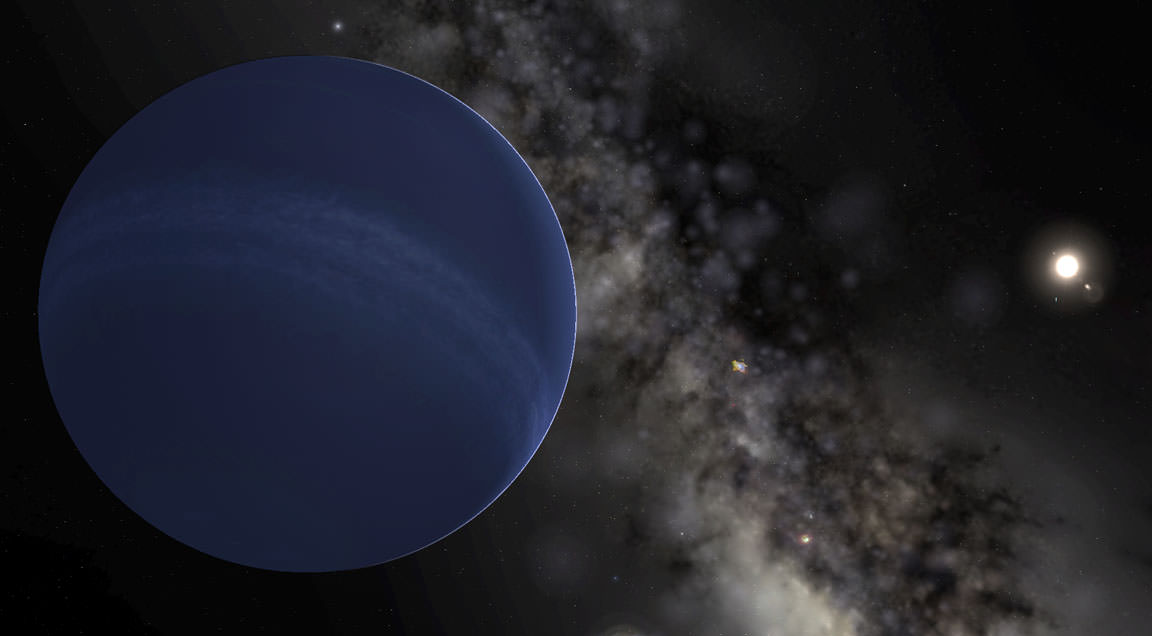
Oh Planet Nine, when will you stop toying with us?
Whether you call it Planet Nine, Planet X, the Perturber, Jehoshaphat, “Phattie,” or any of the other proposed names—either serious or flippant—this scientific back and forth over its existence is getting exhausting.
Is this what it was like when they were arguing whether Earth is flat or round?
Continue reading “Maybe the Elusive Planet 9 Doesn’t Exist After All”

